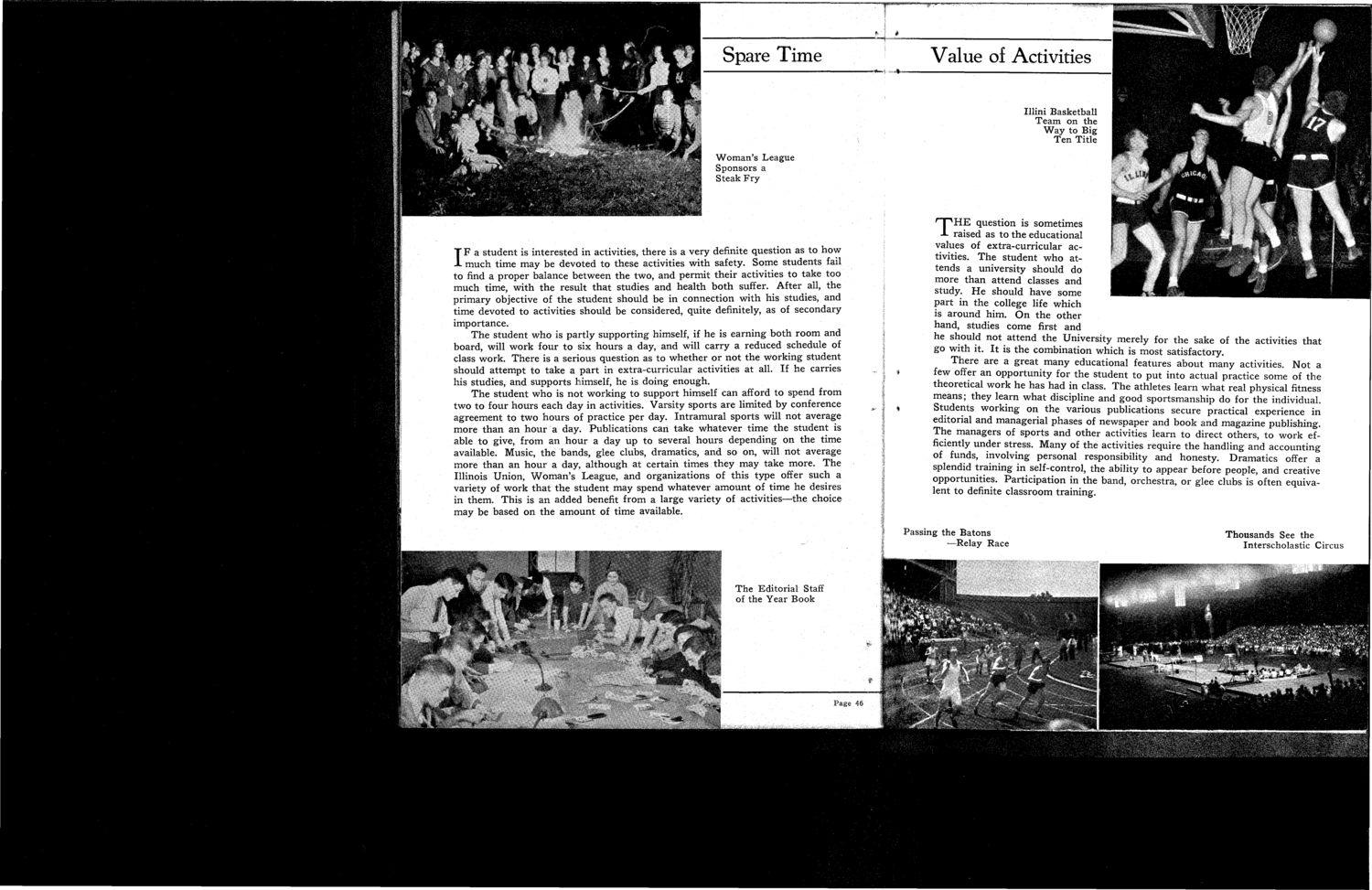| |
| |
Caption: Booklet - Your First Year the University (1935)
This is a reduced-resolution page image for fast online browsing.

EXTRACTED TEXT FROM PAGE:
Spare Time ~d-:*i Value of Activities Illini Basketball Team on the Way to Big Ten Title Woman's League I F a student is interested in activities, there is a very definite question as to how much time may be devoted to these activities with safety. Some students fail to find a proper balance between the two, and permit their activities to take too much time, with the result that studies and health both suffer. After all, the primary objective of the student should be in connection with his studies, and time devoted to activities should be considered, quite definitely, as of secondary importance. The student who is partly supporting himself, if he is earning both room and board, will work four to six hours a day, and will carry a reduced schedule of class work. There is a serious question as to whether or not the working student should attempt to take a part in extra-curricular activities at all. If he carries his studies, and supports himself, he is doing enough. The student who is not working to support himself can afford to spend from two to four hours each day in activities. Varsity sports are limited by conference agreement to two hours of practice per day. Intramural sports will not average more than an hour a day. Publications can take whatever time the student is able to give, from an hour a day up to several hours depending on the time available. Music, the bands, glee clubs, dramatics, and so on, will riot average more than an hour a day, although at certain times they may take more. The Illinois Union, Woman's League, and organizations of this type offer such a variety of work that the student may spend whatever amount of time he desires in them. This is an added benefit from a large variety of activities—the choice may be based on the amount of time available. H E question is sometimes raised as to the educational values of extra-curricular activities. The student who attends a university should do more than attend classes and study. H e should have some part in the college life which is around him. On the other hand, studies come first and he should not attend the University merely for the sake of the activities that go with it. It is the combination which is most satisfactory. There are a great many educational features about many activities. Not a few offer an opportunity for the student to put into actual practice some of the theoretical work he has had in class. The athletes learn what real physical fitness means; they learn what discipline and good sportsmanship do for the individual. Students working on the various publications secure practical experience in editorial and managerial phases of newspaper and book and magazine publishing. The managers of sports and other activities learn to direct others, to work efficiently under stress. Many of the activities require the handling and accounting of funds, involving personal responsibility and honesty. Dramatics offer a splendid training in self-control, the ability to appear before people, and creative opportunities. Participation in the band, orchestra, or glee clubs is often equivalent to definite classroom training. T Passing the Batons —Relay Race ? Thousands See the Interscholastic Circus #^ The Editorial Staff of the Year Book *. r < » »• m' t %i H. ' .^j***** {^•^ft'iL vf.iTi*!** <4*-**~' Pills ^Wk Page 46 r;* 4**
| |